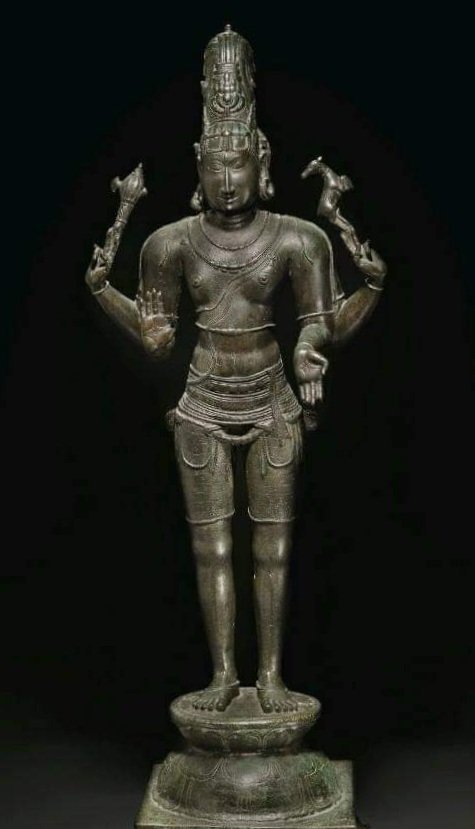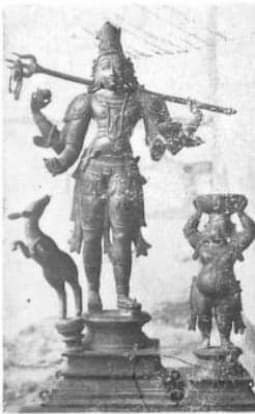The Siddhānta is still very much dominant in TN. But yes, it did not spread much outside TN. Even Umāpati Śivācārya did not propagate it outside TN.
The decline of the Siddhānta has two historical phases: ++
1.It was once very dominant in Kāśmīra, Madhyapradeśa, Gaudạ & Utkaladeśa-s. By 1000s-1100s, it was rapidly shrinking to the area of the southern states.
2. Post 1200s: We have evidence suggesting that the Siddhāntāgamas & Asṭạ prakaranạ s (Siddhānta proper) were well known even in Karnạ̄ tạ ka though it was getting immensely diluted in Kērala.
2a. But new iterations like Vīraśaivam (which itself would manifest in two phases) & Mādhvamata would be rather aggressive in taking over the religious landscape.
2b. In Āndhra & TN, the Siddhānta was facing intense pressure to conform with Smārta/Vedāntī sensibilities & preferences.
2c. Thus , you see developments such as Śrīkantḥa bhāsỵa on Brahmasūtra, Appayya, various kinds of efforts to synthesize Siddhānta & Vedānta such as the Vedānta-Siddhānta-Samarasam of Tāyumānavar.
2d. Thus, the Vedānta was tightening its grip around the neck of the only non-Vedānta system that had substantially retained an independent value. For example, the Pāñcarātrikas had their own unique metaphysics which just melted into various Vaisṇ ạ va Vedānta streams.
2e. Now, it is difficult to get an exact picture of the growth or decline of the Siddhānta in late medieval TN without first identifying its distinct streams.
2f. The stream that dominated Kāśmīra & Madhyapradeśa & had the great Gurus: Sadyojyoti, Bhatṭạ -Nārāyanạ kanṭ ḥ a, Bhatṭạ -Rāmakanṭ ḥ a & Aghoraśiva. The last one became the head of a TN branch of Golagī/Āmardaka matḥ a at Cidambaram. Let’s call this the “Aghoraśiva” stream.
2g. The stream commencing in Meykanḍạ̄r & culminating in Umāpatiśivācārya via Arutṇandi śivācārya & Maraijñāna-sambandha. This is often seen as the second lease of life for the Siddhānta after the decline of the “Aghoraśiva” stream outside the south.
2h. We can call this second one the “Meykanḍạ̄r” stream. This stream would go onto become the dominant one in TN & there is also a caste dynamics at play here, into which I need not delve in for now, for want of time.
2i. The Meykanḍạ̄r stream would continue to thrive till the 18th century, when Śivajñāna Munivar will write the famous Drāvidạ -Māpādị yam (Mahābhāsỵa), a massive commentary on the Śivajñānabodha of Meykanḍạ̄r, a work of 12 Tamizh Sūtras.
2j. There was yet another stream which we can call the Śivāgrayogī stream. Śivāgrayogī was a harsh critic of Aghoraśiva’s Śivasāmyavāda & expounded his own Śivaikyavāda in the 16th century. He wrote a famous commentary on the Samskrṭa Śivajñānabodha.
2k. The Aghoraśiva stream was also harshly attacked by Śivajñānamunivar of the Meykanḍạ̄r stream. For me, the Aghoraśiva stream will always be the legitimate Siddhānta & its decline, most unfortunate.
2l. Nevertheless, it is not the case that this tradition didn’t survive post-Umāpati. We had Nirmalamanị Śivācārya, who commented on Aghoraśiva’s Kriyākramadyotika (KKD). While KKD was a ritual text, Nirmalamanị ’s explanations link the ritual deeply with Siddhānta metaphysics.
2m. There were also the Nigamajñāna uncle-nephew duo about whom I had done a thread earlier:
2n. Their position, in my reading, can be seen as going back to Aghoraśiva tradition while they attempted to also draw upon Śivajñāna-Siddhiyār of Arutṇandī of the Meykanḍạ̄r stream.
2o. Finally, we had Śrī-Kāñcipura-Pañcāksạ rayogī of the 17th century who still revered Sadyojyoti & Aghoraśiva & held in his memory the monastic centres of Madhyapradeśa, which were no longer there.






















